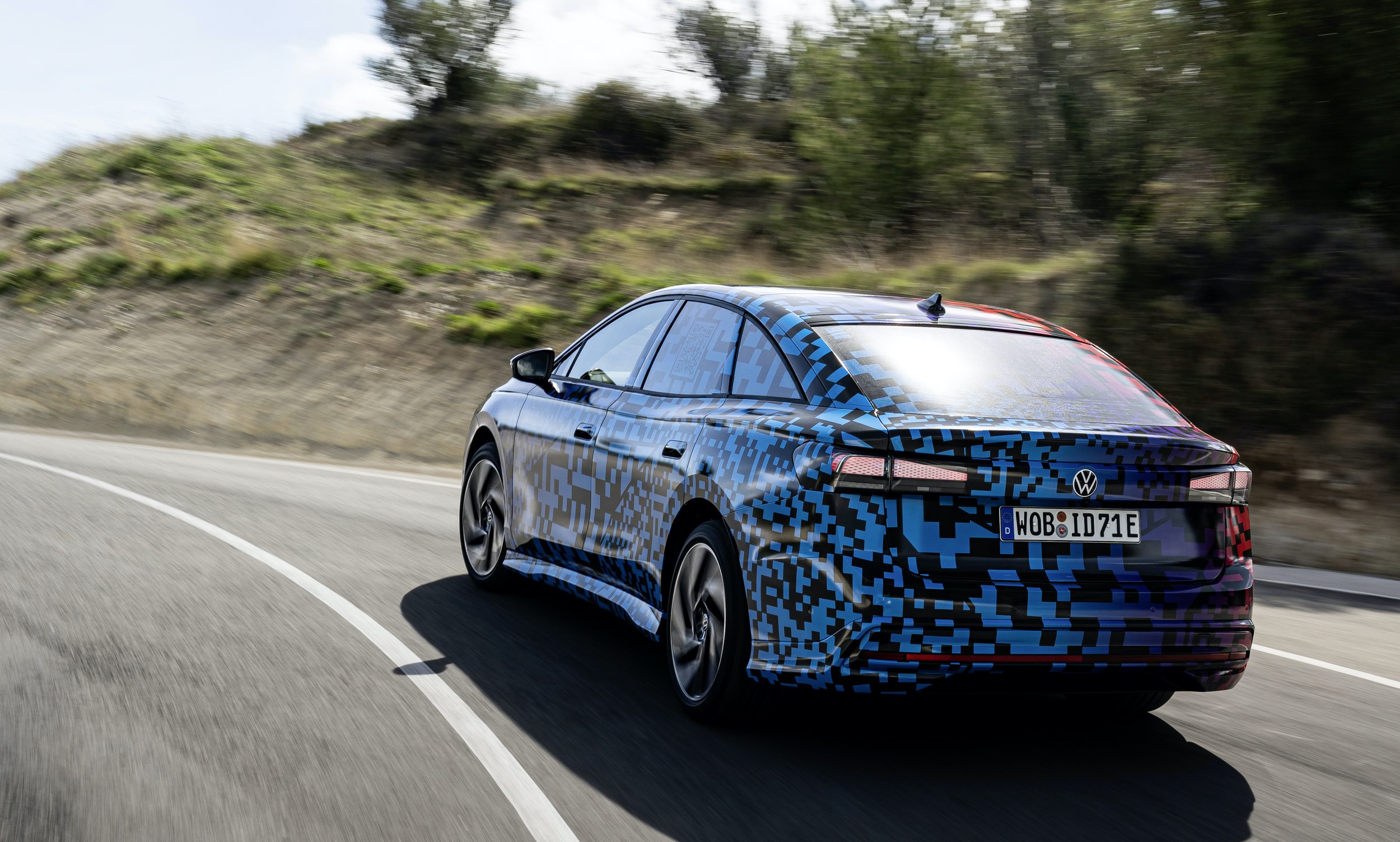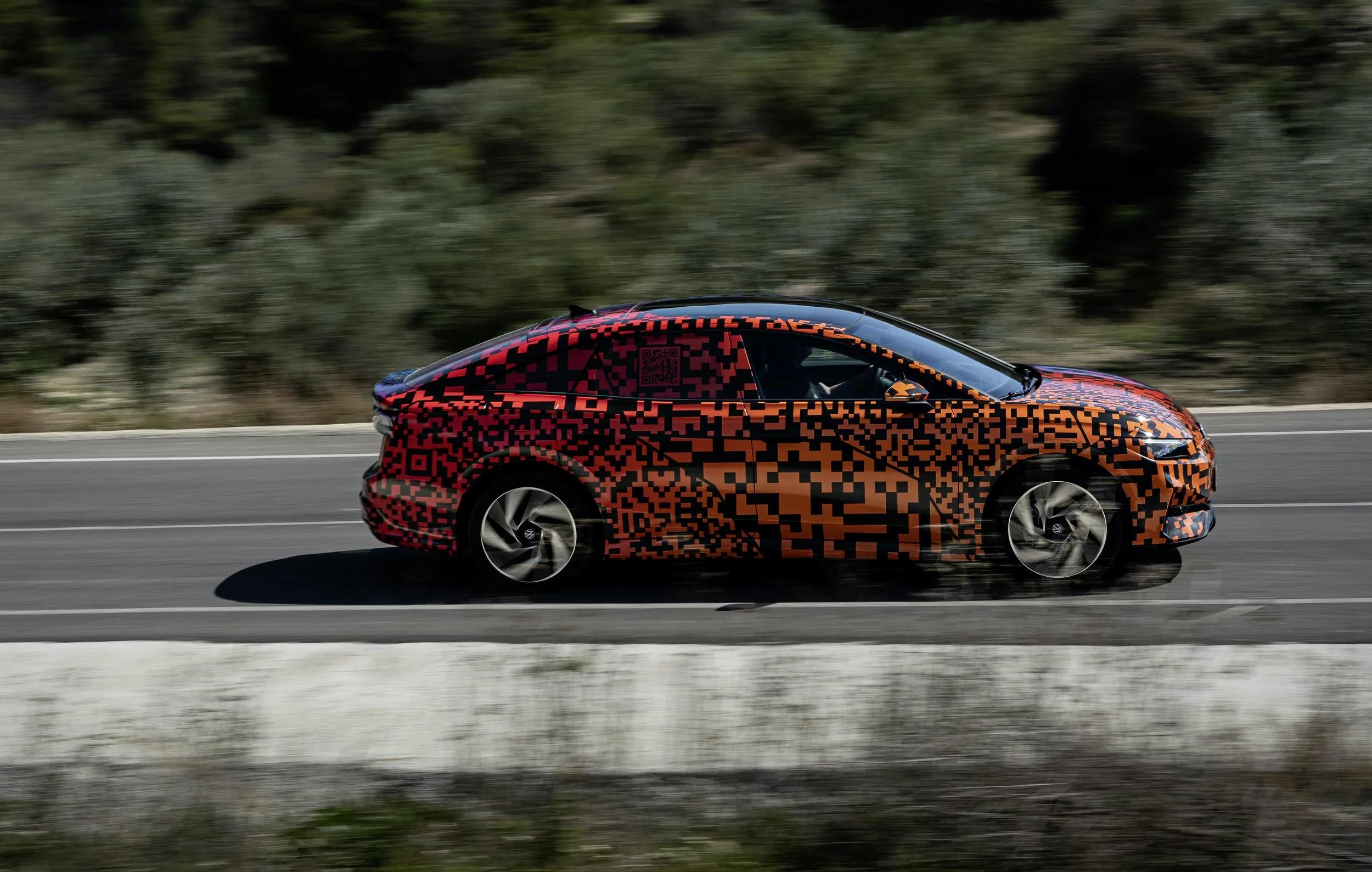Magnificent 7: VW’s slippery electric sedan shown
/Germany’s match for the Hyundai Ioniq 6 has the Korean car’s measure for optimal range.
WHETHER the car itself will ever show here remains uncertain, but the new ID.7 is important to New Zealand nonetheless, just for lending insight into Volkswagen’s electric technology advancements.
One surprise element of an information share in tandem with release of the images here, showing the potential Hyundai Ioniq 6 rival undergoing final testing (though still in a funky camouflage), is that it won’t be solely built for key left-hand-drive markets.
Germany continues to insist Europe, North America and China are the priority markets, yet now the United Kingdom is also signaling itself as recipient. So, in theory, it could make a boat here … at some point.
Potentially, though, it’s down the wishlift. Volkswagen NZ is prioritising establishing the ID.4 and ID.5, and also looking to when it fits in the facelifted ID.3 – stock of the first two is slowly building up, while the third was signaled last year as a firm addition, in preference to the original format car represented here as a grey import.
On point of high interest is that the ID.7 has the most powerful electric motor yet in the ID. family and is also the first ID. model with a battery bigger than 77kWh useable.
The new bigger battery pack will have a useable capacity of 86kWh, this to give the sleek and low-slung edition, in its top spec Pro S fitout, a one-charge range of as much as 700 kilometres, comfortably more than the Ioniq 6 in its most economic format and also beating the Tesla Model 3.
There will be a more affordable version which will come with the 77kWh battery pack that goes into ID.4 and ID.5 here. That model, badged Pro, will have a one-charge range of around 615km – lineball with the Tesla and 1km ahead of Hyundai’s car. Both of those range figures are cited as approximate. A WLTP determination is awaited.
A crucial ingredient of that long range is plain to see; it’s the car’s sleek profile of the ID.7, which has a drag coefficient of just 0.23: Again, lineball with the Ioniq 6. The aero effect is tangible: An ID.4 has a maximum range of 535km with the same 77kWh battery pack.
The ID.7 achieves some slick aero tricks, including 'air curtains' that put a screen of high-speed air in front of and over the tyres to help quell turbulent air flow kicked up by the wheels. The flared-out edges of the door sills help prevent unwanted airflow getting into the flat underbody.
So far, the only powertrain option announced is a single, rear-wheel-drive, three-phase permanent magnet synchronous motor unit rated at 210kW. A four-wheel-drive higher performance version is expected; it could well be unveiled when the car enters production in Germany in June. A second factory in North America will also build the ID.7, starting later this year.
Efficiency adjustments for the electric motor include a rotor with stronger permanent magnets that offer high thermal load capacity, a further-developed stator with a larger effective number of windings in combination with maximum wire cross-section, as well as a water heat sink for the outside of the stator and a new, combined oil and water cooling system that is also designed to ensure high thermal stability.
The inverter - which converts electrical energy back and forth between DC and AC power - has also been made more efficient. VW says that frictional losses in mechanical components have been reduced.
Charging speed is also improved ID. At launch, the ID.7 Pro will be able to charge at up to 170kW on a DC fast charger, while further down the line the ID.7 Pro S will be able to charge at 200kW.
While it’s on the same MEB electric car platform as its VW Group sister ships, VW says that it has meted the ID.7 a good spread of both agility and comfort. This model achieves specifically tuned, high-damping elasto-kinematic mounts on the rear axle. It also takes DCC adaptive damping system and upgraded steering.
Not all ID.7 dimensions have been shared, but VW has revealed it is 4961mm long; which makes it 105mm longer than the Ioniq 6.
Reaction to criticism about other ID. models’ cabin environments and instrumentation operability seems to be have been taken onboard, as ID.7 has smaller main digital instruments but also gains a large head-up display projected onto the windscreen. The 15-inch touchscreen in the centre of the dash is said to take improved software and controls. The 'slider' temperature controls are now backlit, for easier use at night.
Specification details are not complete, but already VW is making a big noise about an optional 700-watt Harmon-Kardon sound system with 14 speakers and a sub-woofer in the boot. The 16-channel system’s surround sound function is fancy: Harmon Kardon uses an algorithm said to clearly separate individual instruments, voices and sound sources in a piece of music and arrange them on a U-shaped sound stage that surrounds all passengers.
The flagship model has 14-way electric adjustable 'ergoActive' front seats with heating, ventilation and 10 air cushions in the backrest that provide a pneumatic pressure point massage. These ‘ergoPremium’ seats have a seal of approval from the independent German Campaign for Healthier Backs (AGR).
Media who have experienced the car over the past few days say the ID.7's air conditioning system is also clever; it has little motors for the main air vents, which can be used to waft warm or cold air around the cabin to the areas where it's most needed. VW says that the system is free from drafts, and that it starts working as soon as the driver approaches the car with the key. Telling the car ‘Hello ID, my hands are cold’ and it'll start blowing warm air through the vents behind the steering wheel.




















